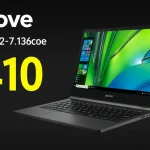Steam ends support for 32-bit Windows after this year

As technology evolves, so too do the platforms and systems we use to engage with it. One significant change on the horizon is Valve's recent announcement regarding Steam, one of the largest digital distribution platforms for video games. Starting January 1, 2026, Steam will no longer support 32-bit versions of Windows, a move that reflects broader trends in software development and computing.
This decision has implications not just for a small percentage of users, but for the entire gaming community as it highlights the shift towards more modern and capable systems. Understanding the reasons behind this move is essential for gamers, developers, and tech enthusiasts alike.
Overview of Steam's 32-bit Support Drop
Valve has officially confirmed that as of the beginning of 2026, Steam will cease support for 32-bit versions of Windows. Currently, Windows 10 32-bit is the only version of Windows that runs Steam in a 32-bit environment, and according to Valve's hardware survey, it accounts for a mere 0.01 percent of the Steam gaming community.
Why the Shift to 64-bit Versions?
Steam’s transition away from 32-bit support is driven by a couple of key factors:
- Increased Performance: 64-bit systems can manage larger amounts of RAM and run more complex applications efficiently.
- Modern Software Requirements: Many modern applications and games rely on libraries and drivers that are only available in 64-bit versions.
- Security and Support: Continuing to support outdated systems can hinder the development of new features and security protocols necessary for a safe gaming environment.
Implications for Current Users
For those still using Windows 10 32-bit, this change means that while the Steam client will remain functional, it will no longer receive updates, security fixes, or technical support. Valve has urged users to transition to a 64-bit system, emphasizing:
- The importance of updates for security and functionality.
- The risk of encountering issues with unsupported systems.
- That continued operation of Steam on these systems cannot be guaranteed.
Understanding 32-bit vs. 64-bit Systems
To grasp the significance of this transition, it’s valuable to understand the difference between 32-bit and 64-bit systems:
| Feature | 32-bit Systems | 64-bit Systems |
|---|---|---|
| Memory Access | Can access up to 4 GB of RAM | Can access significantly more RAM, typically over 16 TB |
| Performance | Less efficient for resource-intensive applications | Better performance for demanding applications and games |
| Compatibility | Limited software and driver support | Broader compatibility with modern applications |
The Future of Gaming on Steam
As the gaming landscape continues to evolve, developers are increasingly designing games that leverage the capabilities of 64-bit architecture. This shift not only improves performance but also enhances the overall gaming experience. For gamers, this means:
- Access to a wider range of games that require 64-bit systems.
- Improved gameplay experiences due to enhanced graphics and processing power.
- The ability to take advantage of more sophisticated features and updates.
What Should Users Do Next?
For users currently on 32-bit systems, it's crucial to consider upgrading to a 64-bit version of Windows. Here are some steps to take:
- Check System Compatibility: Ensure that your hardware supports 64-bit Windows.
- Backup Your Data: Before making any changes, back up important files and data.
- Upgrade Your OS: Purchase and install a 64-bit version of Windows.
- Install Updates: Keep your system updated to benefit from the latest features and security patches.
Valve’s decision to discontinue support for 32-bit versions of Windows is not just a reflection of current technology trends but also a necessary step towards enhancing security, performance, and functionality for gamers. As the gaming community moves forward, the focus will increasingly be on optimizing experiences for 64-bit systems, paving the way for more innovative and immersive gaming opportunities.
For those interested in the technical aspects of this transition, you may find it insightful to watch the following video, which discusses the implications of Steam's move away from 32-bit support:




Leave a Reply